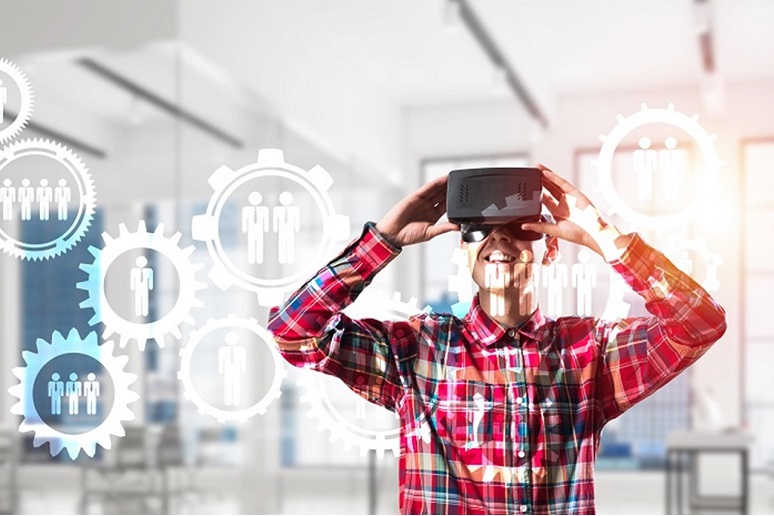How would you like to work in the metaverse? Consider starting with the alternative – the virtual office. While big tech players like Microsoft and Meta are integrating virtual reality (VR) and augmented reality (AR) in their meeting technology, smaller companies are taking advantage of the opportunity—and day-to-day office work isn’t the only use case.
WorkSpace Connect tapped Stephen Fromkin, co-founder, of
Talespin, a software company that develops and builds a virtual, augmented, and mixed reality platform, to discuss how technologies like virtual reality (VR), augmented reality (AR), and mixed reality (XR) can impact the hybrid and remote employee experience while fostering connectivity.
Fromkin also shared how virtual technologies can benefit productivity. He also touched on what digital office technology must come on the market to accelerate the adoption of the virtual office as part of office-based workplaces.
Responses have been edited for conciseness and clarity.
How can digital office technologies like mixed reality solve workplace challenges?
SF: Virtual conference technology such as Zoom, Webex, and Google Meet has been helpful during the pandemic and in the new hybrid workplace, no doubt. But we all know the challenges [this technology] poses—from fatigue to ineffective outcomes, let alone the lack of human connection and camaraderie that is missing. Technologies like VR, AR, and mixed reality provide a different cognitive experience that offers colleagues around the world a way to reclaim some of what we are missing. The use of realistic environments, avatars with body language, and other features recapture the sense of being together [they miss] through other forms of digital communication.
What makes a virtual office best for employees who don’t want to return to the physical office?
SF: Virtual offices hosted in the metaverse provide employees [working from] anywhere with the ability to participate more actively in the daily life of a company. They can collaborate with their colleagues in real time, sit at the virtual table for meetings, and often experience improved morale and engagement because they aren’t commuting. It's a win-win for employees and businesses alike, as businesses benefit from higher productivity and connectivity among their workforces.
How does the digital office improve the remote and hybrid work employee experience?
SF: Employees can now find jobs across the world more aligned to their professional goals and workplace culture preferences, regardless of location. Employees experience a better quality of life from a digital office, as they can work from home, remove commute times, and feel more empowered and autonomous, resulting in a greater focus on delivering results. This [experience] leads to higher morale, as Forbes reported that workers who worked from home were 20% happier than those who did not.
What virtual office technology do you think needs to come on the market to accelerate the adoption of the virtual office?
SF: Technologies such as Microsoft MESH and Open XR standards will be major accelerators toward wide adoption. While remote and hybrid work has hastened interest, and even some adoption, of XR technology, its usefulness is not limited to use cases outside of the traditional office-based workplace.





